- Administrator
- Albums and Singles
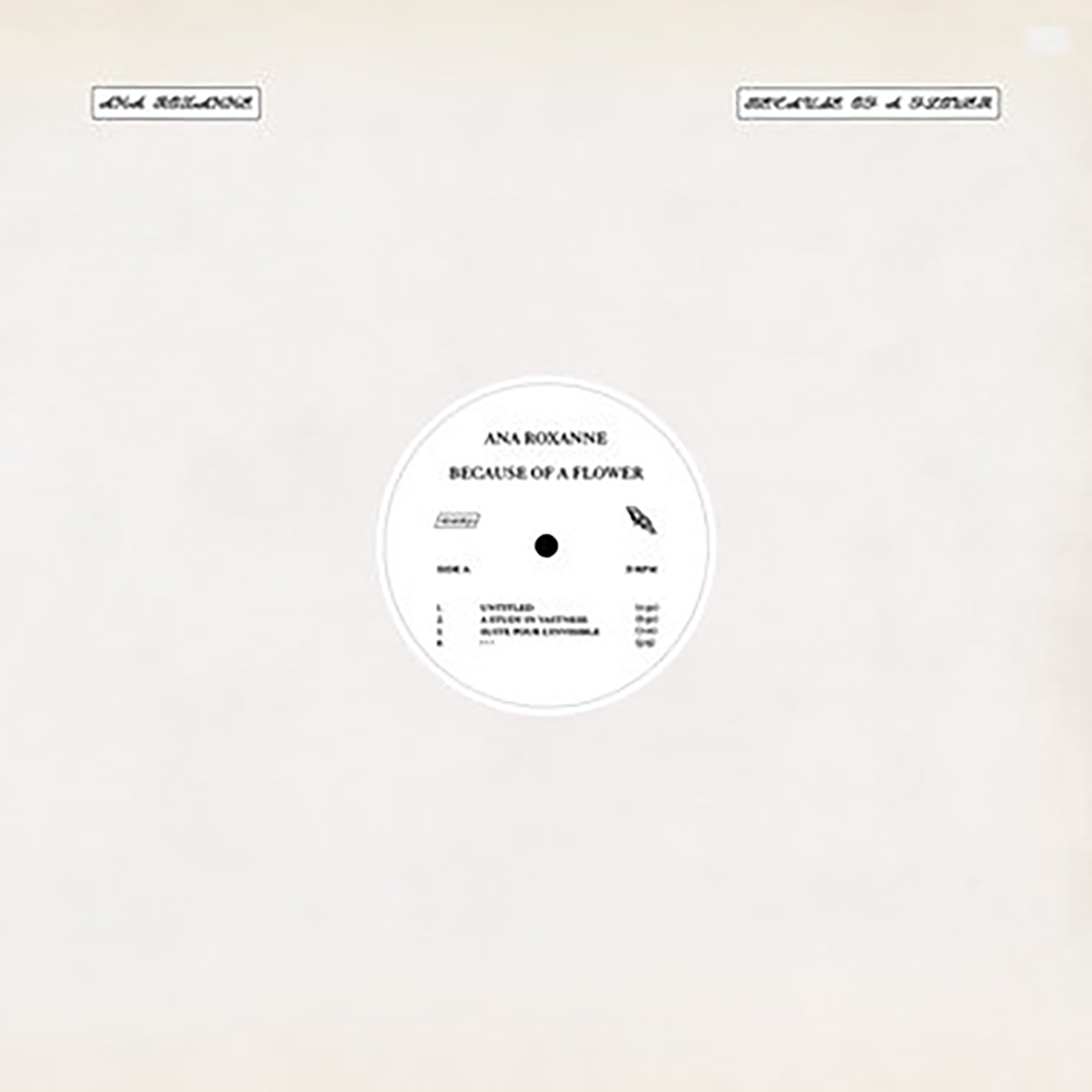 Ana Roxanne's cryptically titled debut mini-LP was one of 2019's most pleasant surprises, as she masterfully wielded a minimal palette of hazy vocals, subtle instrumentation, and field recordings to construct a suite of songs that felt both remarkably intimate and completely untethered to conventional structure or contemporary trends. In fact, I suspect I could have been easily convinced that ~~~ was a highly coveted private press obscurity from the early '80s. This latest release (her first for Kranky) takes a somewhat different direction in some ways, but thankfully remains every bit as beguiling as its predecessor: the field recordings may be less prominent and Roxanne's previous impressionistic, amorphous structures have been largely replaced with more conventional shapes, yet the hooks are now stronger and the songs more memorable. That feels like a perfectly acceptable trade-off in my book. While I am historically dismayed when artists that that I enjoy move further away from the idiosyncrasies that made their early work so special, Roxanne proves herself to be the rare exception to that trend, as the best moments of Because of a Flower take the warmth and melodicism of ~~~ to some truly beautiful new heights.
Ana Roxanne's cryptically titled debut mini-LP was one of 2019's most pleasant surprises, as she masterfully wielded a minimal palette of hazy vocals, subtle instrumentation, and field recordings to construct a suite of songs that felt both remarkably intimate and completely untethered to conventional structure or contemporary trends. In fact, I suspect I could have been easily convinced that ~~~ was a highly coveted private press obscurity from the early '80s. This latest release (her first for Kranky) takes a somewhat different direction in some ways, but thankfully remains every bit as beguiling as its predecessor: the field recordings may be less prominent and Roxanne's previous impressionistic, amorphous structures have been largely replaced with more conventional shapes, yet the hooks are now stronger and the songs more memorable. That feels like a perfectly acceptable trade-off in my book. While I am historically dismayed when artists that that I enjoy move further away from the idiosyncrasies that made their early work so special, Roxanne proves herself to be the rare exception to that trend, as the best moments of Because of a Flower take the warmth and melodicism of ~~~ to some truly beautiful new heights.
I was both surprised and disoriented to learn that Roxanne apparently spent five years working on Because of a Flower, as it feels like a significant evolution from ~~~, yet it is entirely possible that some of these pieces were composed at the same time as her debut (or possibly even earlier).In a conceptual sense, however, it makes perfect sense that Roxanne may have been working on two noticeably divergent releases at once, as the two feel a lot like different chapters in the same abstract memoir.On ~~~, Ana's soundscapes seemed primarily inspired by warm feelings of nostalgia for her family and childhood.Because of a Flower, on the other hand, seems to be more thematically focused upon her intersex identity (and the more recent stages of her life).It would probably be extremely easy for a casual listener to miss that though, as she has an intuitive genius for incorporating those themes in subtle and oblique ways that enable her work to feel artistically honest and deeply personal, yet also resonate on a universal human level.For the most part, the album's more personal themes manifest themselves in repurposed textbook passages, "cinematic dialogue samples and castrati aria allusions."It was admittedly a bit of a surprise to hear found sounds borrowed from movies rather than the natural world, but she invariably makes very effective use of them (the endearing "tropical beach" ambiance of ~~~ does happily resurface on the album’s final two songs though).As enjoyable and evocative as Roxanne's choice of samples can be, however, the heart of this album is unquestionably the blearily gorgeous vocals that float languorously over dreamlike drones or melodic bass lines.
For me, the centerpiece of the album is the slow and sensuous "Camille," as Ana's voice soulfully coos and swoons over a backdrop of warm organ chords and an R&B-inspired drum machine groove.There are also some snatches of film dialogue thrown into the mix, which nicely enhances an already wonderful piece by adding a sharper and more unpredictable textural layer.While I tend to think of her work as vaguely "ambient" in nature, the addition of a beat suits her aesthetic extremely well.I suspect she would have a bright future as an arty outsider R&B artist if she wanted that.That said, her aesthetic works just fine without a beat as well, so there is no shortage of other highlights and they head in some unexpectedly varied directions.For one, "A Study in Vastness" is absolutely sublime, resembling a ghostly, deconstructed Enya with some dark and moody undertones lurking within its fog of blurred drones."Suite Pour L'invisible," on the other hand, is a bit more representative of the album's overarching aesthetic, as it is built from a warmly melodic and ringing bass motif enhanced by quietly twinkling guitar arpeggios.Musically, it calls to mind a classic 4AD sound akin to This Mortal Coil, but Roxanne's strain of Romanticism feels too simple, intimate, and spontaneous to warrant close comparisons to anyone else: she might be exploring similar moods and using similar instrumentation, but the casual naturalness of her vocals make almost everything she records sound uniquely her own.That makes sense, given her working method of "beginning with 'a drone element and a mood,' then intuiting melody, syllables, and lyrics incrementally, like sacred shapes materializing from mist."Her work has the effortless charm of an artist who is so full of life and so comfortable with singing that it is hard to imagine her ever making a vocal decision that does make a song instantly better (presumably because she has reached an entirely post-decision plane of pure instinct).     
I would be remiss if I did not also single out the divergent instrumental "---" as another gem, as it unfolds as a gently pulsing and dreamlike reverie of burbling electric piano that organically shapeshifts into fresh tendrils of melody.The remaining three pieces are certainly likable as well, but they are a bit more atmospheric in tone, arguably functioning more as integral parts of the album's overall arc than as individual highlights.I am tempted to describe Because of a Flower as Roxanne's "singles album" and ~~~ as its more abstract and New Age-inspired counterpart and that would not be an objectively misleading characterization.However, each has at least one piece that muddies the waters enough to elude such easy generalizations.On Flower, it is the songs that begin and end the album that feel like the connective tissue linking it thematically and compositionally with its predecessor.Between those two poles, however, lies quite a wonderful four-song streak that feels like something new.A small part of me admittedly wishes that there were more "songs" as tightly crafted and rhythmic as "Camille," but I suspect that is just the lingering part of me that craves familiarity.That part of me needs to shut the hell up, as Roxanne has done a superb job of carving out her own quiet niche in an oft-overwhelming cultural landscape and Because of a Flower is a lovely and beautifully crafted album.As an absorbing and thoughtfully sequenced whole, I suppose it surpasses the more uneven ~~~, but the two albums feel enough like complementary halves of the same vision that choosing a favorite feels like missing the point entirely.
Samples can be found here.
Read More
- Administrator
- Albums and Singles
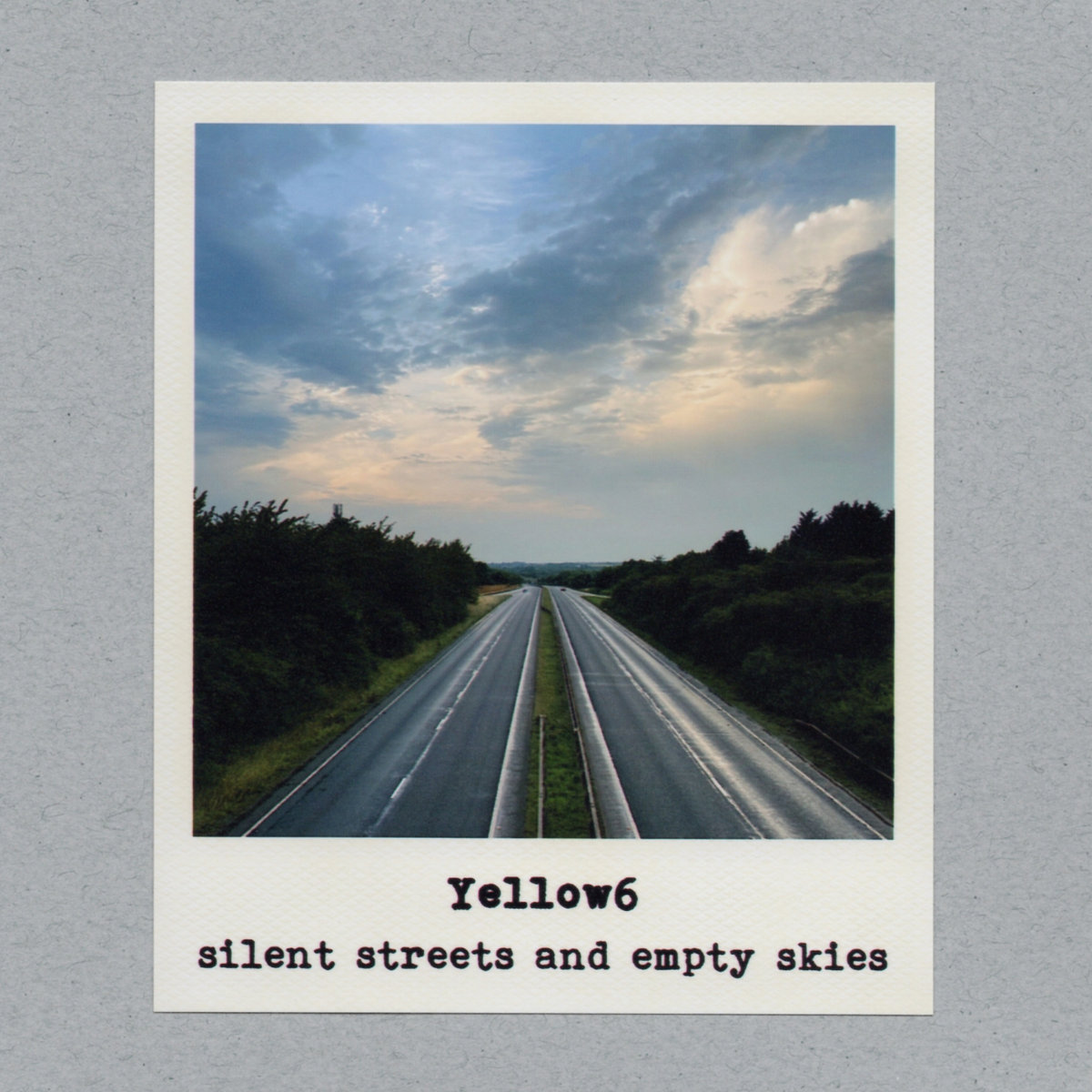 Yellow6, the solo project of British guitarist Jon Attwood, first came to my attention through his collaboration with Thisquietarmy for the 2011 album "Death Valley," but Attwood himself has been active in since 2000. Recorded between April and June of 2020 during the COVID-19 pandemic lockdown, the title of his latest is an indicator of the eerie lack of traffic, people in the streets, and vapor trails from air traffic from a neighboring airport. The fresh time to reflect and social distance—along with the purchase a new guitar—inspired Attwood to create nine pieces of beautifully layered electric guitar and effects that instill calm, to be enjoyed as ambient background music or appreciated for the guitar craft. The sparse, delicate sounds parlay a stillness of these strange times; a stillness that can be both disturbing and enriching, and wrapped in contemplation.
Yellow6, the solo project of British guitarist Jon Attwood, first came to my attention through his collaboration with Thisquietarmy for the 2011 album "Death Valley," but Attwood himself has been active in since 2000. Recorded between April and June of 2020 during the COVID-19 pandemic lockdown, the title of his latest is an indicator of the eerie lack of traffic, people in the streets, and vapor trails from air traffic from a neighboring airport. The fresh time to reflect and social distance—along with the purchase a new guitar—inspired Attwood to create nine pieces of beautifully layered electric guitar and effects that instill calm, to be enjoyed as ambient background music or appreciated for the guitar craft. The sparse, delicate sounds parlay a stillness of these strange times; a stillness that can be both disturbing and enriching, and wrapped in contemplation.
The nine parts are broken fairly evenly by a triptych of sorts in "Unbroken Sun (one)," "Unbroken Sun (two)," and "Unbroken Three (three)." Coming in as the three briefest ones, they each tend to meander, serving as a break and bookends to the album. With a bright, partly cloudy sky on the cover, I prefer to think of these as connectors, much in the same way the sun rises and sets each day, hence unbroken. Yet, while the sun may be unbroken, humanity is not, and the feeling is evident in the second track "Safe." With drums set low and back into the mix, the track offers cascading electric guitar, offering a steady and "safe" repetition of rhythm and comforting guitar work that results in a feeling of being surrounded in something warm and consolatory. The track had me visualizing kicking back in a recliner, feet up near a warm, crackling fire, immune to whatever the world was doing outside—a feeling I no doubt share with many others.
Other tracks are like-minded, with Attwood taking a layered and atmospheric approach, if not quite as settling as "Safe." With the exception of the aforementioned "Unbroken Sun" theme, all of the tracks go well on past seven minutes each, but every minute is infinitely listenable with a rich variety of guitar, piano and effects. "Panam," the longest at 18:40, is a haunting standout track that starts mildly enough but builds on an underlying rhythm of a consistent yet irregular heartbeat through which the guitar strings resound. If sound could be matched to a star, then the resonance of Jon’s choice of notes would be akin to the shimmer and sparkle of stars through a cloudy night sky as guitar drone and plucked strings cut through a steady chorus of sad minor chords. The choice of title is apt, with "Panam" construed as "pan American" in this case, the sound feeling broad and full as it stretches over the length of the track—perhaps in the same way the pandemic has traversed borders and has a far-reaching impact.
This is music in which to get lost, but can easily be enjoyed as a focus. The majority of the music here is calm, but there are passages of heaviness. This heaviness is generally emphasized, then lifted by a follow-up passage of quietude, providing a sense of freedom and release. This is worthy listening for an escape from the heaviness of the new normal.
Read More
- Administrator
- Albums and Singles

It began with Kwaidan, a simmering study on the lost art of Japanese ghost story-telling. Then there was Komachi, baptized in the earthly winds and static that define its comforting sonics.
On Kofū, Meitei masterfully closes his trilogy of lost Japanese moods with an engaging interrogation of artforms and aesthetics as a provocation — or, as fashioned in the album’s subtitle, a "satire of old Japanese aesthetics." Each entry's distinct flavor has earned Meitei acclaim for conjuring a bygone culture through his transportive form of ambient music. Kofū arrives as a deconstruction of this approach. With his first release on Kitchen, Meitei has quietly defied expectations set by his previous two albums, while continuing to challenge modern notions of Japanese sounds.
Once again, Meitei resumes his focus on a Japan that has long ceased to be. This time, Kofū is deliberately playful in bridging a sensibility that connects this imagined past to the present. Fractured piano chords are the first to greet you on "Kintsugi" before they make way for a spectral elegance that parades the haunted mask of Kwaidan on "Man'yō."
But like an ambient soothsayer schooled in the art of the 808s, Meitei quickly drives Kofū with propulsion on "Oiran I," which shares a sibling in Side B track "Oiran II." On both songs, he builds tension served up by flickering hip-hop rhythms — achieved by carefully processing old drum and metal sounds — with a subversive spirit unforeseen in any of his work thus far. Dissecting vocal recordings to the point of incomprehensibility, Meitei aims for something stirring beyond- words — not unlike J Dilla and his mountain of cut-up soul samples, or The Caretaker with decaying 78s. He abides by a principle attributed to the master Hayao Miyazaki: "Beyond logic speaks of human nature."
Kofū allows full immersion into fragments of the past without the trappings of nostalgia. The tracklist is denoted by prominent (and unseen) figures of this history. Tracks "Sadayakko" and "Otojirō" are named after renowned entertainers from the Meiji era, while "Nyōbō" is dedicated to a long-suffering line of working class women within a patriarchal Japanese society. The sounds of "Oiran," sharing the name of the title bestowed upon courtesans, were sparked after learning about the treatment of red light district workers within this era. It paints a grim picture of baidoku (also known as syphilis) and its ravage spread.
These stories cloud the overall mood of Kofū, but Meitei takes a Mizoguchi-like approach to mould that unimaginable pain with tenderness. "Oiran I"'s hidden subtitle is Hana, and "Oiran II" is Shiokaze. As Meitei explains, "Hana means gorgeous and glorious. Shiokaze is the sea breeze — for her life." Tracks like "Urameshi-ya" and "Gen'ei" provide a meditative space amidst the turbulence, while "Shōnen" takes a turn for the cinematic. The eight-minute odyssey is engulfed by shadowy voice loops, mixed best for a headphone experience in a solitary setting.
Meitei bids farewell to an expedition first sparked by a passion for a long-forgotten cultural past. Kofū is a definitive conclusion with an open invitation to listeners from Japan and beyond — encouraging continued appreciation of this sacred part of history, wholly untethered from the world at large.
More information can be found here.
Read More
- Administrator
- Albums and Singles
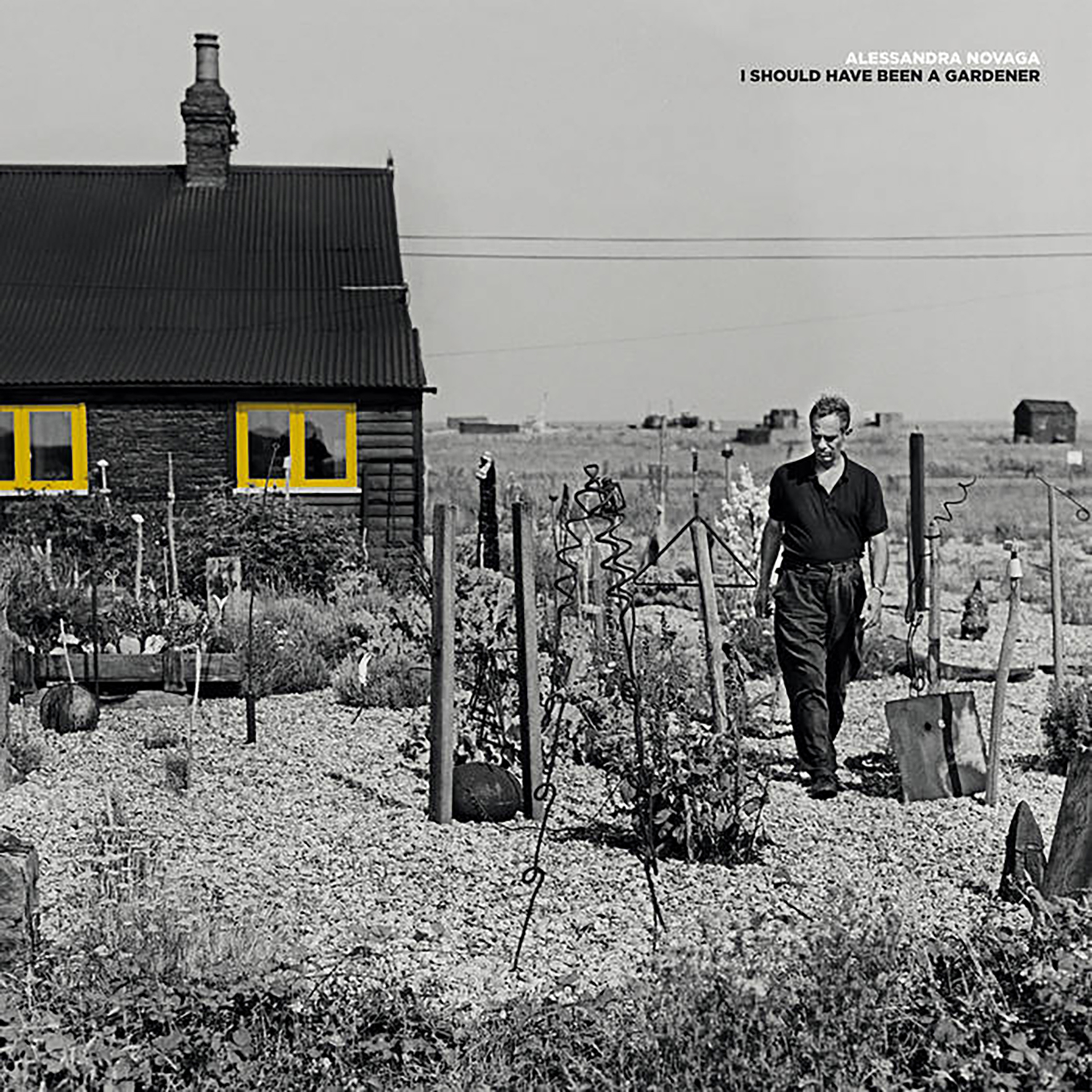 New albums from Die Schachtel do not surface very often these days, but just about everything they choose to release is at least enticingly unusual. That trend happily continues with this latest album from Milanese guitarist Alessandra Novaga, who follows her 2017 homage to Rainer Werner Fassbinder with this tribute to yet another iconic cinematic auteur in Derek Jarman. As someone currently obsessing over Andrei Tarkovsky's writings about art, I can say that Novaga is a definite kindred spirit, as I Should Have Been A Gardener obliquely celebrates Jarman himself rather than presenting itself as an imagined soundtrack for any specific film. In fact, I actually wish it was a bit less oblique, as the album only reaches its most memorable heights on the final piece when Novaga’s slow-moving and sublime guitar work is entwined with an old interview with Jarman himself. While that surprise posthumous cameo is certainly welcome, it is not necessarily his presence that elevates that piece into something more transcendent—it is more that Novaga's lovely and understated playing is most effective when it interacts with other textural layers. Almost the entire album is a modest, quiet pleasure though, which I suppose is entirely befitting for a tribute to a man who would have cheerfully devoted his life entirely to gardening under different circumstances.
New albums from Die Schachtel do not surface very often these days, but just about everything they choose to release is at least enticingly unusual. That trend happily continues with this latest album from Milanese guitarist Alessandra Novaga, who follows her 2017 homage to Rainer Werner Fassbinder with this tribute to yet another iconic cinematic auteur in Derek Jarman. As someone currently obsessing over Andrei Tarkovsky's writings about art, I can say that Novaga is a definite kindred spirit, as I Should Have Been A Gardener obliquely celebrates Jarman himself rather than presenting itself as an imagined soundtrack for any specific film. In fact, I actually wish it was a bit less oblique, as the album only reaches its most memorable heights on the final piece when Novaga’s slow-moving and sublime guitar work is entwined with an old interview with Jarman himself. While that surprise posthumous cameo is certainly welcome, it is not necessarily his presence that elevates that piece into something more transcendent—it is more that Novaga's lovely and understated playing is most effective when it interacts with other textural layers. Almost the entire album is a modest, quiet pleasure though, which I suppose is entirely befitting for a tribute to a man who would have cheerfully devoted his life entirely to gardening under different circumstances.
Living as we do in the internet age, it is sometimes easy to forget that the world was once full of vibrant and distinctive regional scenes and that sometimes it only took a handful of visionaries to ignite a highly localized explosion of creativity that would resonate for decades.Naturally, one of my favorite scenes is the one chronicled in David Keenan's England's Hidden Reverse and it is extremely hard to imagine much of my favorite music existing if there had never been a Throbbing Gristle.The same can be said of Derek Jarman's immeasurable influence, as I was already well aware of him as suburban American teenager in the '90s despite never having seen a single one of his films (and ever having met anyone else who had either).I have since seen some of his work, of course, but Jarman seems to be the rare artist whose life, views, and friendships made an even deeper and long-lasting impact than his actual art.Or, perhaps more accurately, Jarman's life was his art every bit as much as his films were.Novaga clearly appreciates that aspect of Jarman's legacy on a deep level, as she views I Should Have Been A Gardener "as a distillation, pulling from across the unique life, death, work, political commitment, and diaries" of Jarman.In fact, Novaga seems to draw far more inspiration from Jarman's famous shingle shore garden than she does his films ("flowers blooming between the stones - hovering in the stark space between an endless sea and post-modern shadow of a nuclear power plant.").Appropriately, the album’s warm and ghostly opening piece ("April 21st") featues a field recording of slow footsteps on stones as its foundation, which makes for a hauntingly beautiful elegy.It is also an intriguingly unusual one, as the simple melody and subtle harmonies of Novaga's nakedly unadorned theme feel almost secondary to the way that they quiver and linger over the crunching backdrop like faint rays of sun on a rocky beach.
If I am being fully honest, I have to admit that my first impression of this album was "this sounds like an unedited recording of Novaga just improvising at home."In my defense, it may very well be that, as it seems like Novaga's set-up was about as minimal as can be for a solo electric guitar album: almost every piece sounds like it was played straight through an amp enhanced solely by subtle delay, reverb, and chorus effects.Occasionally, there is a hint of distortion, as in "Father Forgive Me," yet Novaga's guitar almost always sounds exactly like a guitar.That is a real curveball in the sound art milieu, as nearly all of my favorite experimental guitar albums are devoted to ingeniously pushing the boundaries of what the instrument can sound like.The fact that one approach is extremely prevalent does not preclude or invalidate other approaches, however, and I genuinely admire Novaga's alternate path of purity and quiet simplicity.Essentially, Novaga shifts the focus away from pushing the boundaries of the instrument towards the actual notes being played and the subtle, tender moods that they evoke.The way Novaga plays those notes is an especially compelling aspect of this album as well, as she builds her pieces primarily from slow, simple melodies that leave a hazy vapor trail in their wake (with no apparent enhancements from underlying drones or layered arrangements).Moreover, her compositional approach is a very loose and impressionistic one.That looseness can admittedly dilute the initial impact of these pieces, but their impression steadily deepens with repeat listens and the album casts quite an appealing (if fragile) spell when Novaga hits the mark.To my ears, she achieves that feat most decisively with the quivering harmonics of "Poppies in the Morning" and bittersweet chord swells of the aforementioned closer (the title piece).In their own way, both pieces are perfect distillations of understated, dreamlike beauty.
My feelings about the remaining two pieces are a bit more complicated, as both "The Wound Dresser" and "Father Forgive Me" diverge from the poignantly lovely mood of contemplation that the rest of the album achieves so beautifully.On "The Wound Dresser," Novaga is atypically adventurous harmonically and takes an even more abstract approach to composition than usual, resulting in a shifting series of moods that sometimes approaches a pointillist, slow-motion, and tumbling approximation of jazz."Father Forgive Me," on the other hand, feels like a strangely disjointed dirge, as the subtly distorted central melody alternately blossoms into an odd trilling motif or erupts into a Richard Bishop-esque flurry of vaguely Middle Eastern modality.In theory, that sounds appealing enough, but it is a bit jarring to watch Novaga jump from her usual elegant lightness of touch to such abrupt transitions.To be fair, that more aggressive and unpredictable aesthetic might suit the piece's specific inspiration perfectly, but it is nevertheless not among my favorite of Novaga's sound paintings.Still, my overall impression of the album is quite a favorable one now that I have fully immersed myself in it, as it is quite a moving and sensitive tribute to a man who absolutely deserves one.Moreover, it forced me to re-evaluate my somewhat calcified ideas about what makes a good experimental guitar album (a very unexpected side benefit).Novaga has carved out a very appealing niche for herself with this record, assuredly abandoning almost all of the expected technological enhancements and shortcuts to conjure a suite of songs that feels refreshingly human, direct, and undiluted by artifice.
Samples can be found here.
Read More
- Administrator
- Albums and Singles
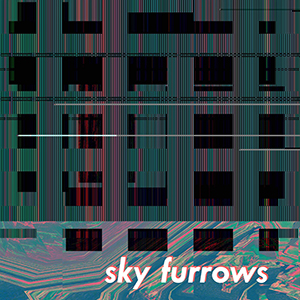 As a four piece from the Albany, New York region consisting of some of the most well known members of the small, but dedicated noise/psych scene, Sky Furrows is a project that is seemingly from another time that belies the band’s avant garde tendencies. Rather than blending disparate genres or delving into deep electronic improvisations, the album is a concise, somewhat predictable one, but that is in no means an insult. Instead this self-titled album is almost like a time capsule uncovered from some three decades past, and one that beautifully encapsulates a sound and a scene that was all too brief.
As a four piece from the Albany, New York region consisting of some of the most well known members of the small, but dedicated noise/psych scene, Sky Furrows is a project that is seemingly from another time that belies the band’s avant garde tendencies. Rather than blending disparate genres or delving into deep electronic improvisations, the album is a concise, somewhat predictable one, but that is in no means an insult. Instead this self-titled album is almost like a time capsule uncovered from some three decades past, and one that beautifully encapsulates a sound and a scene that was all too brief.
Skell Recordings/Tape Drift Records/Philthy Rex Records
By a past era, I specifically mean the mid to late 1980s, where post-punk transitioned to "college rock" but before grunge and punk revivalism overwhelmed the genre.Given the fact that the members of Sky Furrows were active musicians of that generation (although not necessarily aware of each other at the time) rather than young people seeking to emulate a past they did not exist in.For this reason especially, the album has a sincerity and authenticity that only people who were "there" would be able to capture.
Lead by author/poet/music critic Karen Schoemer's spoken word narratives, the other three members (drummer Phil Donnelly, guitarist Mike Griffin, and bassist Eric Hardiman) are all members of Albany's long running psych rock collective Burnt Hills as well.Griffin and Hardiman are also active in more experimental guises: Parashi for the former, and the latter as Century Plants and Rambutan (both also have also been frequent collaborators with John Olson in recent years).Schoemer’s delivery fits the largely personal lyrical content well, with a dry yet not disconnected intonation as she presents detailed vignettes of life, ironically are timeless enough in their references that they could have been from 1986 or today.Both her writing and her delivery contain just enough self-awareness to never cross that threshold into "serious artist" pretension but still have the right amount of gravity to showcase what a brilliant writer she is.
The improvisational side of the band is not necessarily on display here, but it does not need to be.While Schoemer's narratives are at the center of the album, the music never comes across as sounding like just a backing band, nor does it ever take the spotlight away from the spoken word:it always remains in perfect balance.Right from the onset of "Alyosha" the groundwork is laid clear:Griffin's slightly twangy guitar over Donnelly's tight, light touch drumming and Hardiman's rich bass.Shifting between subtle accompaniments to heavy outbursts, the flow is perfect.
Shifting tempos and dynamics also keep things diverse in the concluding "Foreign Cities," ensuring it’s nine-plus minute duration never drags for a moment.There is a bit more consistency within the shorter songs, however."36 Ways of Looking at a Memory" is all fuzzy guitar leads and late 1980s modern rock sounds that resemble a multitude of artists but only by inspiration instead of imitation."The Mind Runs a Race and Falls Down" is a more uptempo excursion, punctuating the spoken word elements with heavier melodic passages.The album’s centerpiece comes early in the form of the 15 minute "Ensenada."Here the psych essence of Burnt Hills comes a bit more to the forefront, with Donnelly and Hardiman laying down a rhythm section that manages to balance the mechanical repetition of krautrock with just a hint of jazz looseness.Griffin’s guitar echoes and squalls out with less restraint, catching delays or the occasional passage of feedback, but in no way seeming random or self-indulgent.
When I say that Sky Furrows are not breaking any new ground on their debut, it is in no way meant to be demeaning, because that was not their intent.Instead it feels like the proverbial lost record of a band that just got to the edge of the popularity they deserved but were held back.Or one of the rare brilliant private press albums that no one has ever heard of, but is discussed with a holy grail-like reverence amongst record collectors.The authenticity is not just in the sound, but also in the approach:as previously stated, this a band who were active in these various scenes across the country before.Sky Furrows is not a band capitalizing on someone else’s history: this is entirely their own.
Read More
- Administrator
- Albums and Singles
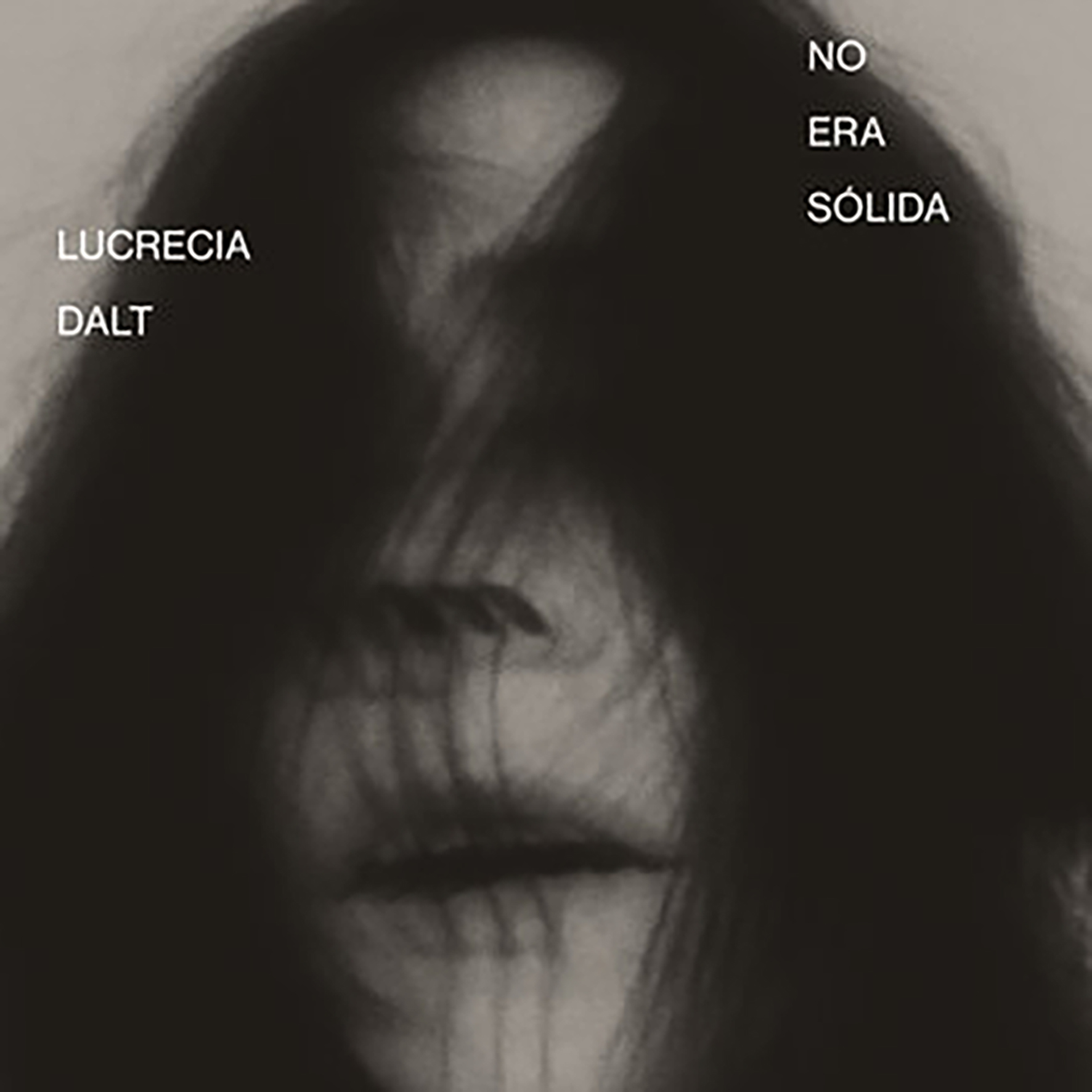 With 2018's Anticlines, this Berlin-based artist established herself as one of the more adventurous and unique composers to surface in the experimental music scene in recent years and I am pleased to report that this follow-up burrows even deeper into the oft-fascinating rabbit hole of its predecessor. On a conceptual level, that deepening manifests itself in No era sólida’s deeply unusual themes, as the album is billed as a "suspended auditory illusion" that "embraces the possibilities of possession." Thankfully, the possession in this case is not of the demonic variety, as Dalt instead envisions the album as a sort of interrogation room where she interacts with an invented character named Lia. If Dalt were a lesser artist, such a premise would likely send me running in the other direction, but she executes it in such a subtle and abstract way that listening to No era sólida feels akin to unexpectedly finding myself in Twin Peaks' "red room": everything familiar is unrecognizably transformed into something disconcertingly alien and enigmatic. While the rare songs that blur into pop-like territory (such as "Ser boca") are generally the album's strongest moments, the entirety of No era sólida casts an impressively unique and haunting spell.
With 2018's Anticlines, this Berlin-based artist established herself as one of the more adventurous and unique composers to surface in the experimental music scene in recent years and I am pleased to report that this follow-up burrows even deeper into the oft-fascinating rabbit hole of its predecessor. On a conceptual level, that deepening manifests itself in No era sólida’s deeply unusual themes, as the album is billed as a "suspended auditory illusion" that "embraces the possibilities of possession." Thankfully, the possession in this case is not of the demonic variety, as Dalt instead envisions the album as a sort of interrogation room where she interacts with an invented character named Lia. If Dalt were a lesser artist, such a premise would likely send me running in the other direction, but she executes it in such a subtle and abstract way that listening to No era sólida feels akin to unexpectedly finding myself in Twin Peaks' "red room": everything familiar is unrecognizably transformed into something disconcertingly alien and enigmatic. While the rare songs that blur into pop-like territory (such as "Ser boca") are generally the album's strongest moments, the entirety of No era sólida casts an impressively unique and haunting spell.
The first time I heard No era sólida, I was amusingly reminded of the pivotal scene in 1997's Air Bud in which a referee announces that there is nothing in the rule book that states that dogs cannot play basketball.Thankfully, any similarities between the Air Bud franchise and Dalt's work begin and end there, but there is definitely something striking about how effortlessly she disregards and circumvents convention in both her approach to songwriting and how she wields the various tools in her starkly minimal palette.While Dalt is far from the first experimentalist to approach music in an unique way, her occasional proximity to pop music greatly heightens the disorientating effect of her innovations.In essence, she achieves the musical analogue of the "uncanny valley" effect.My favorite piece on the album, "Ser boca," is the most mesmerizing example of this phenomenon: all the expected elements of a catchy song are arguably in place (a great groove, a strong hook, a vocal melody, etc.), yet there is something profoundly "off" about absolutely all of them.The beat is hollow and sluggish, the hook feels hazy and stuck in an obsessively repeating loop, and the main vocal melody is intertwined with something that resembles distracted ululating.And yet it is great both because of and in spite of all that.In this case, the wordless warbling sounds seem to originate from a synthesizer rather than Dalt's own vocal cords, but one of her stated intentions was to "channel a Surrealist's automatism" to dissolve "language into an evocative collection of glossolalia."In that regard, No era sólida is a resounding success, as several of the other pieces make me feel like I just wandered inside a psychedelic birdhouse (especially the fluttering flute-like tones of "Seca" and the strangely lurching whines of "Di").
I suspect "Seca" is also a prime example of one of Dalt's other recent interests: finding ways to creatively exploit "harmonic distortion in tape delay" (it is presumably no coincidence that Dalt and Aaron Dilloway have become repeat collaborators).I also suspect that an entire book could be written about all of the other interesting techniques and concepts that went into this album, as I have said absolutely nothing about the various transformations that Dalt's imagined protagonist undergoes or the central role they play in shaping the album's arc.In broad strokes, however, the album purportedly mirrors Lia's emergence "from primal, sensory states to the sentient and active conditions" of "revolt" and understanding.As a listener, I experience much of that structure as an elusive and enigmatic abstraction, but the woozily angelic title piece does feel like it ends Lia's journey in a place of calming beauty, coherent form, and clarity.Lia's evolution before that point can feel quite murky and inscrutable though, as the album unfolds as one strange and hallucinatory vignette after another like a hall of mirrors in a phantom carnival.In fact, Dalt’s aesthetic is so alien and disorienting that I am hard-pressed to guess at even a single one of her influences.One inspiration is admittedly mentioned in the album description ("griot singer Fanta Damba"), but knowing that does not change the fact that everything ultimately emerges in completely unrecognizable form once it passes through the prism of Dalt's artistic vision.Consequently, it is best to abandon any attempts to either place No era sólida in a larger cultural context or unravel what any individual piece might mean.The album's true pleasure lies in simply entering the psychedelic bird house and allowing the cavalcade of unpredictable sensory experiences to work their weird magic.
Given that I have spent most of my life chasing down increasingly outré and challenging sounds and that this album still managed to beguile and bewilder me in spite of that, it is safe to say that No era sólida is a triumph on at least one level.Beyond that, however, it is hopeless to try and be at all objective about whether or not it is a fascinating outlier, a goddamn masterpiece, or just exasperatingly self-indulgent.My gut tells me that Dalt is an endlessly compelling artist and that this is a very good album, but such a conclusion admittedly comes with some caveats.The main one is that I wish there were more moments in which No era sólida cohered into something approximating a structured song.There are a few, such as the aforementioned "Ser Boca" and the atypically melodic lead single "Disuelta," yet the bulk of the album occupies a territory more akin to psychotropic tape collages that do not evolve into anything greater.Admittedly, I am exactly the target demographic for such a thing, but Dalt even wrongfoots me there by avoiding the obvious move of creating a shifting pulse with subtly out-of-phase fragments.Instead, it feels like Dalt is allowing me a brief window into a single mysterious and vividly realized tableau...and then moving onto the next one before I am able to fully grasp the meaning or experience what happens next.Of course, a case can also be made that each piece is merely a detail in a thoughtfully constructed and sophisticated whole (and it would be a fairly strong case).However, No era sólida still feels a lot like a puzzle that I struggle to assemble only to find that the final image reveals yet another puzzle (admittedly a cool trick).In any case, I suspect only time will tell whether or not No era sólida's otherworldly spell will continue to deepen for me, but I certainly love that it exists: this is unquestionably one of the most memorably original albums of the year.
Samples can be found here.
Read More
- Administrator
- Albums and Singles
 There are three main periods The Fall may be grouped into: the raw punk early years, the more "melodious" classic years, and the post-'90s period up to Mark E. Smith’s passing in 2018. The Frenz Experiment, originally released in 1988 and reissued this year by Beggars Banquet, is part of the "classic" years, a time when the band churned out a series of nearly perfect albums.
There are three main periods The Fall may be grouped into: the raw punk early years, the more "melodious" classic years, and the post-'90s period up to Mark E. Smith’s passing in 2018. The Frenz Experiment, originally released in 1988 and reissued this year by Beggars Banquet, is part of the "classic" years, a time when the band churned out a series of nearly perfect albums.
I came upon The Fall in 1987 by way of the compilation of early singles Palace of Swords Reversed. I remember not being entirely sure what to make of them, but loved "Totally Wired." In those days, I got most of my music from college radio and MTV’s 120 Minutes, so unless either were spinning The Fall, I had so much other music vying for my attention.
When lo and behold, the band had themselves a bonafide radio hit with "Hit the North (Part 1)," a funky, groovy little number that, what’s this? — was danceable? The wonderful and frightening world of The Fall was suddenly opened to myself and so many others. Additionally, along came a lovely rendition of The Kinks’ "Victoria" that saw airplay on MTV, and the band started to have greater access to the American psyche. It was the album in which I fell in love with The Fall, and became a lifelong listener (as well as a glutton for punishment in attempting to obtain their entire catalog).
The Fall were a band for whom the word "prolific" could have been created, releasing more than 30 studio albums, nearly 18 live albums, and appeared on countless compilations in their 42 years existence. With so many albums to choose from, why reissue Frenz Experiment, as opposed to, say, an earlier classic from their catalog like Perverted by Language? Many have tried to rank the band’s albums, or at least provided a guide through their massive catalog.
It is precisely on the strength of the aforementioned tracks, along with string of nearly perfect tunes that make this a perfect choice for reissue. From the opening track "Frenz" it is obvious the band is favoring tuneful, near pop sentiments, making this one of their most accessible albums in their catalog. The band sounds almost positively joyful, particularly on tracks like "Athlete Cured" and the suave "The Steak Place," the usual blaring politics dampened in favor of downright humor and joy, MES at his snarkiest but most fun (have a listen to "Oswald Defense Lawyer" or "Guest Informant" as proof). The band sounds as if they had a great time making the album.
The reissue contains the original album, singles and b-sides from "There’s a Ghost In My House," "Hit the North" and "Victoria" releases. "But wait, there’s more! Act now and you’ll also get..." a previously unreleased 4-track BBC session, and finally, a cover rarity of The Beatles "A Day in the Life." There is a 24-page booklet with new interviews included in the set.
Read More
- Administrator
- Albums and Singles
Longform Editions 16 presents four new pieces from a diverse set of artists exploring ideas through sound composition surrounding listening, perception and focus, both in the abstract and our everyday.

claire rousay
it was always worth it
LE061
Having forged a stark individual path with her deeply personal domestic and field recordings, Texas-based claire rousay offers a compelling exploration into the dynamics of human relationships and self-perception. Listening to it was always worth it—heavily scored with voice-to-text—is to recast your ears towards the ghosts of lost loves and find a new perspective.
"I love the sound of voices, especially the voices of my loved ones. Those are the sounds I listen to."

Taylor Deupree
Canoe
LE062
Head of the influential 12K label, New York's Taylor Deupree's own work plays on rich, abstract atmospherics and, along with his solo work, has found immense acclaim through collaborations with kindred spirits Ryuchi Sakamoto and David Sylvian. Canoe is a supreme work of stillness and meditation with a mysterious sense of calm, evocative of being adrift at sea.
"With Canoe I hope to instill a sense of solitude, loneliness, and the hushed searching for and unknown something, just out of reach."
Clarice Jensen
Platonic Solids 1
LE063
Melding cello composition and electronic elements, Clarice Jensen has been fascinated by the five shapes that make up the platonic solids, writing graphic scores based on these along with the elements of earth, fire, air, water and the quintessence Plato assigned to them. Platonic Solids 1 portrays sound that evokes stasis and movement at the same time, and very generally, explores the perception of sound through dimensional space and time.
"I'm fascinated by what happens to my perception of time when I'm listening to music, particularly work that is minimal and long… I find myself getting lost in galaxies inside the minutiae of something my ear has attached to."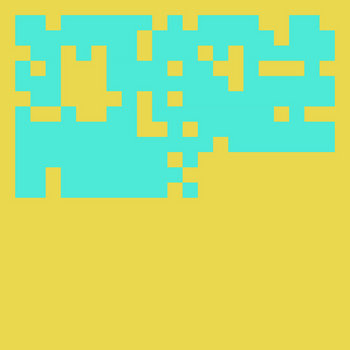
Strategy
The Babbling Brook
LE064
Strategy, the long-running alias of Portland mainstay Paul Dickow, offers The Babbling Brook, a stunning sound collage of continual, rolling change, rotating on a seemingly unending axis of calm and chaos. An ode of sorts to the movement of water, the piece represents Dickow's ongoing quest to challenge the more traditional sense of ambient music.
"This concludes a long series of explorations of unsequenced, improvised approaches to music which does not commit fully to the traditional sense of "ambient" music as purely contemplative in nature, but instead offers moments of confrontation, surprise, dream logic, or disorientation interwoven with sustained, immersive elements."
More information can be found here.
Read More
- Administrator
- Albums and Singles

"I am sitting in a garden, I haven't left the property in weeks, someone is dropping off food once a week. I haven't seen a human being in ages, I feel like a reverse Schroedinger cat - do I exist when nobody sees me? I must be somewhere in France but I don't remember. I have lost my consciousness again. When I wake up I hear a broken record looping somewhere in the mansion. A washed-out opera. Behind the trees I see the dilapidated hermaphrodite sculpture in a field of verdant nettles and fern. I hear gunshots far afield, aeroplanes in the sky, sirens on the main road.
When unconscious I dreamt of sitting on the Concorde observing the scarab blue ocean and iridescent clouds from above, an erstwhile receding memory. Sometimes I hear the organ of the nearby Renaissance Cathedral merging with the Russian Church bells.
I am hallucinating again. Someone's humming in the kitchen? Singing? A radio? I overhear two young women talking about art galleries in the neighbor's garden. Bees attack, again…..again and again. The hairspray finally intoxicates them. An amphoric Japanese voice is whispering in my head saying I will die soon. Someone (something?) bangs on the vases. The fountain's water turns dark red.
Fleur calls and says mum died. The funeral will be televised on Tuesday. We opt for the synthetic choir for the service. The call is suddenly interrupted. Mold is slowly taking over the house. I go back inside."
More information can be found here.
Read More
- Administrator
- Albums and Singles
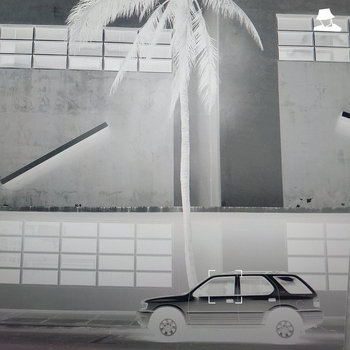
After recent mixtape 88, Actress reveals new album Karma & Desire.
Karma & Desire includes guest collaborations from Sampha, Zsela and Aura T-09 and more. It's "a romantic tragedy set between the heavens and the underworld" says Actress (Darren J. Cunningham) "the same sort of things that I like to talk about – love, death, technology, the questioning of one's being." The presence of human voices take the questing artist into new territory.
Flute-like melodies contributed by Canadian organist and instrument builder Kara-Lis Coverdale.
More information can be found here.
Read More
- Administrator
- Albums and Singles
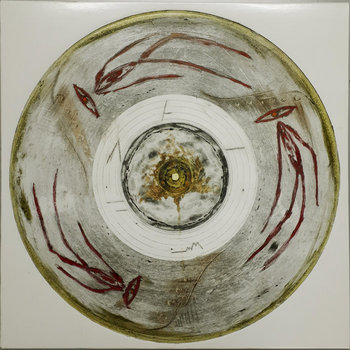
It was on a winter's night ('Nuit d'Hiver' indeed) five days before Christmas 2018, when My Cat Is An Alien and Jean-Marc Montera converged onstage to perform for the second time as a trio, proving once again their heavenly graced and powerful music-mind-soul connection. As it happened at their very first live encounter in 2015 (released by San Francisco cult label Starlight Furniture Co. under the title Union Of The Supreme Light in 2017), "Before jumping on stage, NO word was spoken about the concert we were going to play, nor even trying to figure out any sort of basic music scheme to be followed" recalls Roberto Opalio.
In 2018, at the opening of the final edition of the REEVOX-NUIT D’HIVER festival at GMEM inside the restored industrial complex of La Friche La Belle de Mai in Marseille, the spaceship-like dome of Le Module shook like never before. Nuit d'Hiver is a true musical hurricane of radical free jazz and "Spiritual Noise."
Brothers Maurizio and Roberto Opalio are world-renowned for their radical aesthetics of "instantaneous composition," their innate skill in creating articulated and ever-evolving improvisations that develop as if they were proper written scores from beginning to end. The same approach occurs in every duo's collaboration with other artists too—be they Lee Ranaldo and Thurston Moore of Sonic Youth, Italian electronic pioneer Enore Zaffiri or Hungarian avant-garde poet-performer Endre Szkarosi to name a few—as well as in whatever situation they might be invited to perform—including the opening of Venice Art Biennale or Milan Fashion Week.
Jean-Marc Montera is a revered guitar maestro whose skill in non-idiomatic improvisation surpasses the mastery of all his companions for his willing to explore new sonic territories instead of repeating classic formulas nowadays become too much "academic." Co-founder of GRIM (Groupe de Recherche et d’Improvisation Musicales) in 1978 and now associated artist of GMEM in Marseille, Montera debuted as soloist on legendary label FMP (Free Music Production). Over the years, he has collaborated with many free jazz and avant-garde musicians including Famoudou Don Moye of Art Ensemble of Chicago, Fred Frith, Chris Cutler, Barre Phillips, Jean-François Pauvros, Pauline Oliveros and Christian Wolff, and set up several groups specializing in the interpretation of graphic scores by 20th century composers (Cornelius Cardew, John Cage, Earle Brown, etc.).
More information can be found here.
Read More

